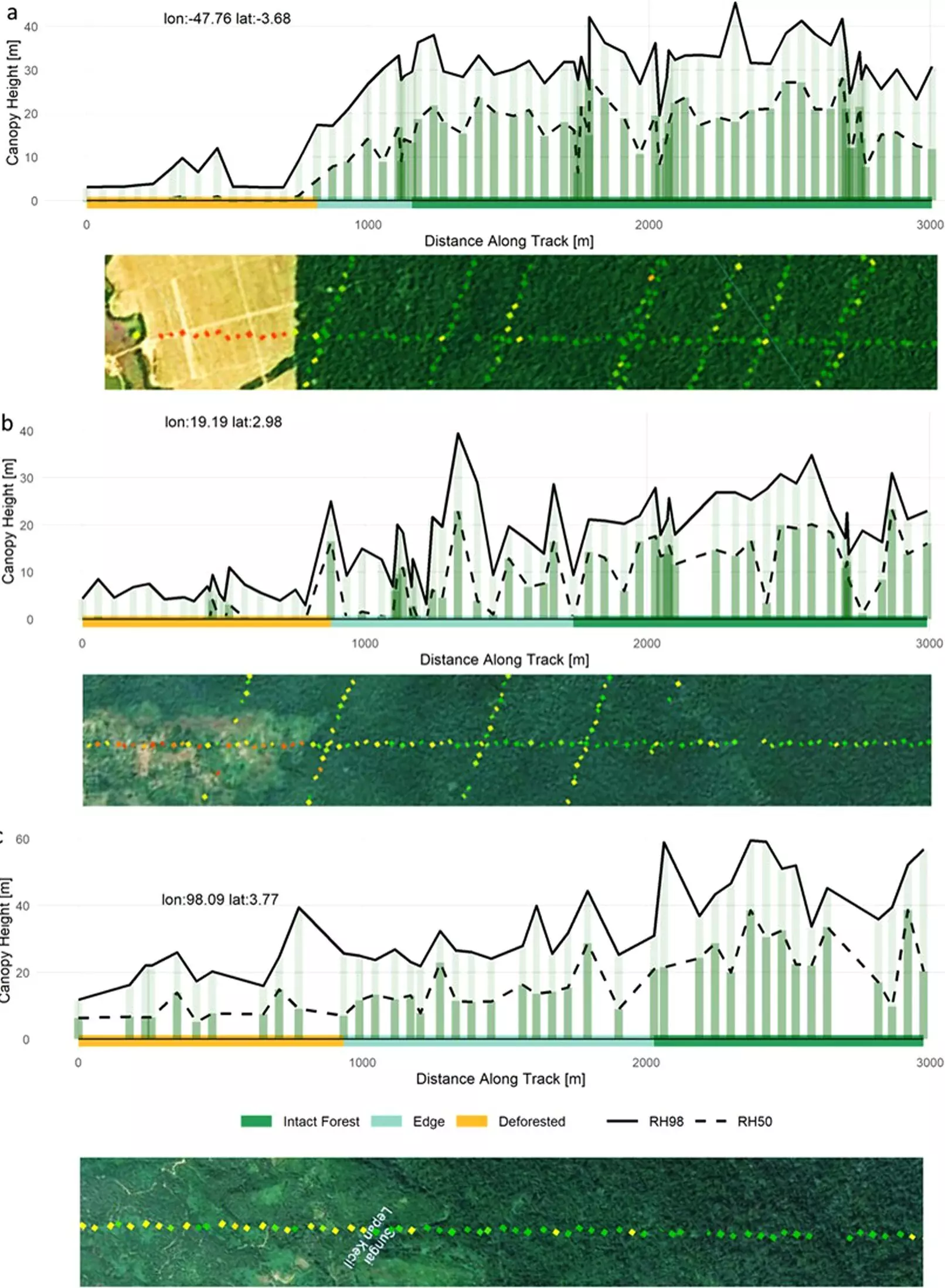Tropical forests play a crucial role in sustaining high biodiversity levels and mitigating climate change. However, these forests are under threat from deforestation, which involves the cutting and conversion of forested areas for various human activities such as agriculture, mining, and infrastructure development. While deforestation has been a major focus of conservation efforts, the impacts of human-driven degradation on the remaining forests are often overlooked.
Understanding Forest Degradation
In a groundbreaking study published in Nature, researchers used advanced remote sensing technology and data analysis to gain a new perspective on the extent and long-lasting effects of forest degradation in tropical moist forests. The study revealed that human-driven degradation and fragmentation have more significant impacts than previously thought. Degradation of forests can occur through activities such as selective logging, fire, and edge effects, which affect trees at the boundaries of forests due to unfavorable environmental conditions.
The study utilized data from the Global Ecosystem Dynamics Investigation (GEDI) instrument on the International Space Station to quantify degradation and fragmentation of tropical forests. The researchers found that fragmentation caused by agricultural or road expansion can reduce canopy height and biomass by 20-30% at forest edges. The edge effect can extend up to 1,500 meters into the intact forest, leading to further reductions in canopy height and biomass. This overall edge effect threatens up to 18% of tropical moist forests due to high fragmentation and its widespread impact inside the forest.
One of the key findings of the study was the long-lasting effects of forest degradation on canopy structure. Low-intensity disturbances can lead to significant reductions in canopy height and biomass over time, with some areas experiencing decreases of 20-80% over 20 to 30 years. The slow recovery rate of degraded forests, combined with additional disturbances and climate extremes, makes these forests more vulnerable to complete deforestation and other natural disasters.
The study highlights the importance of recognizing and addressing the hidden impacts of human activities on tropical forest degradation. By identifying forests that are most vulnerable to degradation, conservation efforts can be targeted more effectively. Protecting tropical forests is crucial not only for preserving biodiversity but also for maintaining the ecosystem services they provide, such as carbon sequestration and climate regulation.
The study’s findings underscore the urgent need to halt worldwide forest loss and prevent further degradation of tropical forests. Greater efforts are required to protect these valuable ecosystems and meet the conservation commitments made at recent United Nations conferences. By addressing the hidden human footprint of tropical forest degradation, we can ensure the long-term sustainability of these vital natural resources.


Leave a Reply